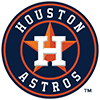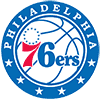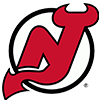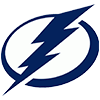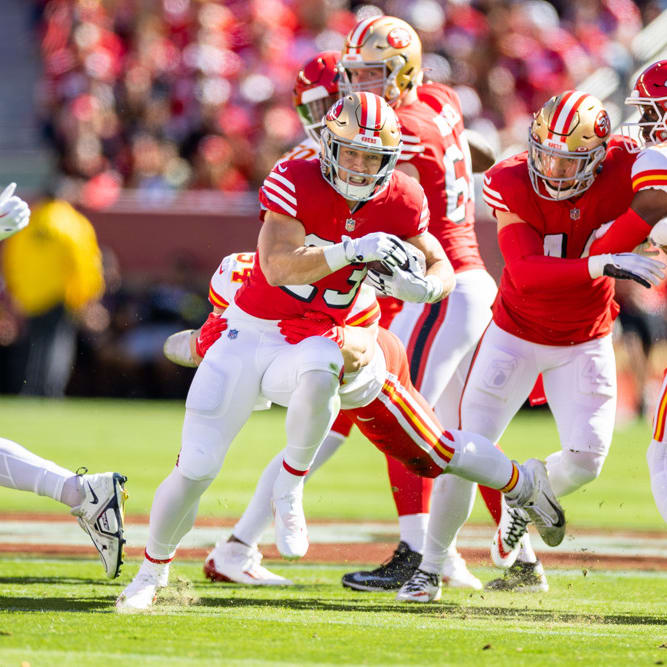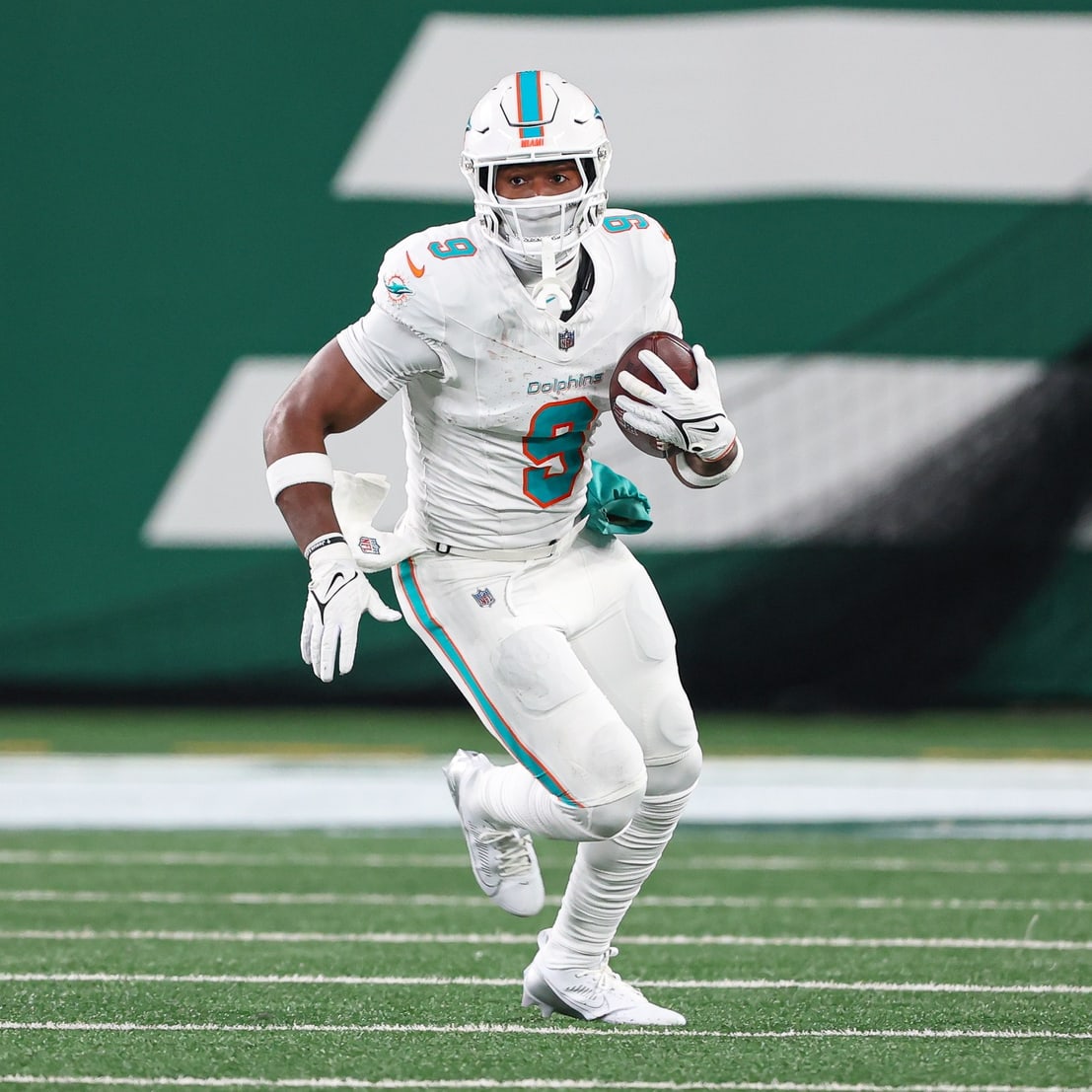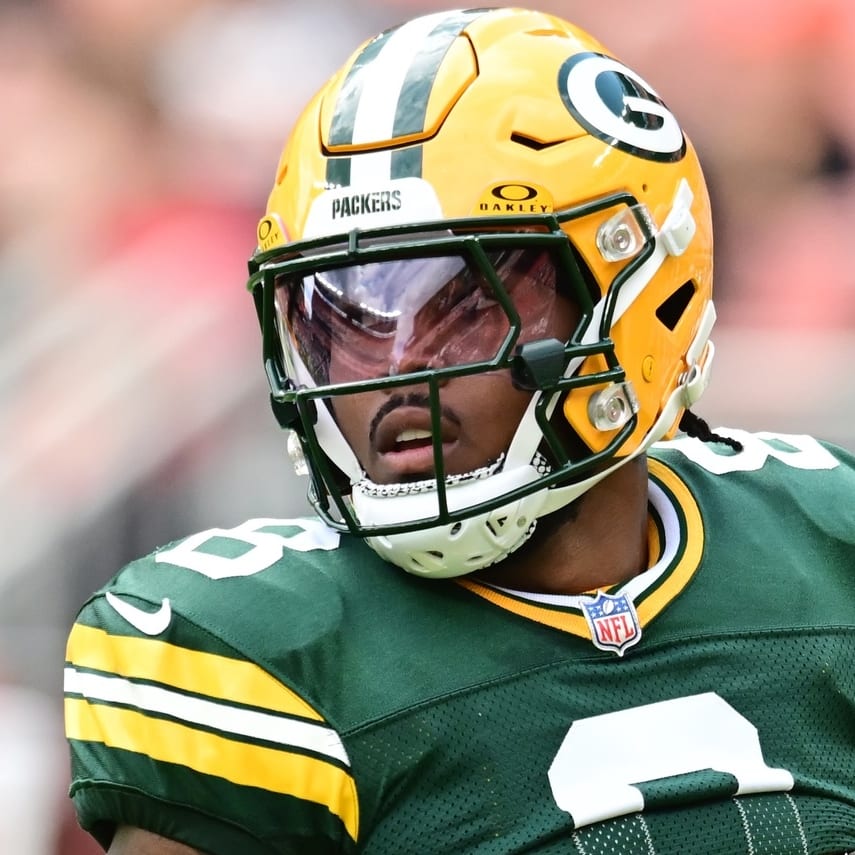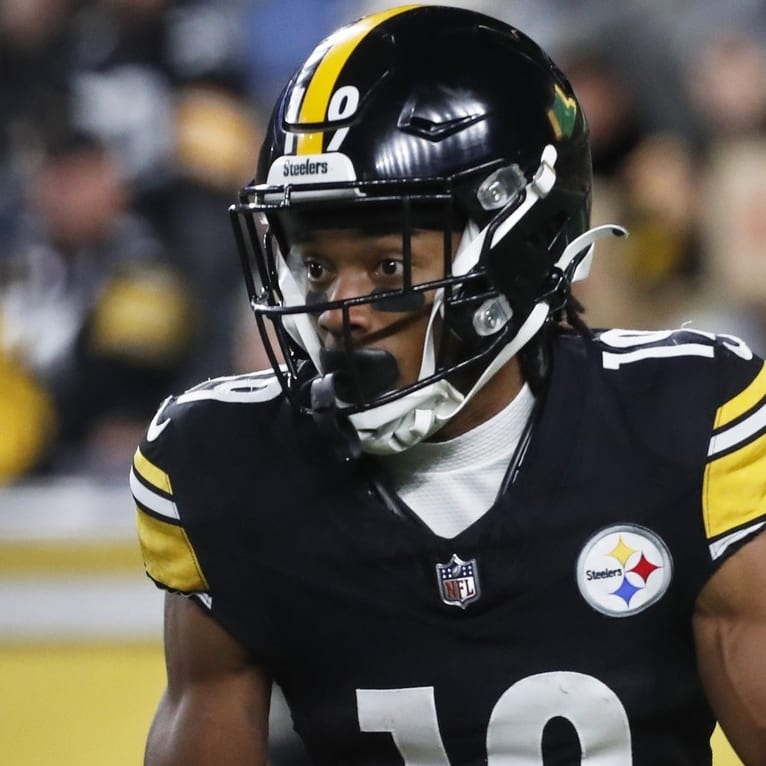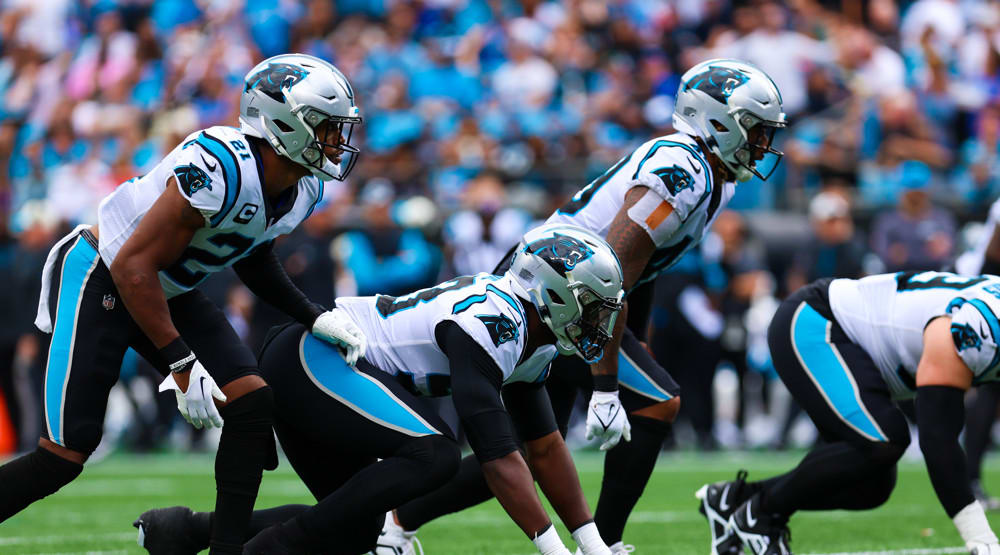Sustained breakthroughs are less common than one might expect, considering the inherently high rate of player turnover in the NFL. While the league's middling commodities are cycled in and out, there are usually only a few players each year who vault themselves into the league's upper tiers and stay there throughout a full season. Sure, there will always be a few no-name running backs who enjoy productive stretches as a result of injuries to teammates, but most of these players disappear just as quickly as they burst onto the scene.
What we're looking for when discussing potential "breakout players" is significant jumps in value that can be sustained throughout the 2017 season – last year's WR3 becoming a WR1, or last year's bench/waiver fodder emerging as a solid RB2. The nature of the exercise is such that most of the players listed won't truly break out, as we're looking for guys who have some chance to take a huge step forward and massively outperform their average draft position (ADP) or auction price, rather than the players with the best chance to improve a little and outperform their ADP by a round or two. While that second type of player is still worth targeting, the name of this particular game isn't subtle, steady improvement.
Ideally, these players will be drafted/priced in line with their production in previous seasons, but some inevitably will garner summer hype and eventually be valued at a level beyond what they've ever produced on the field. We
Sustained breakthroughs are less common than one might expect, considering the inherently high rate of player turnover in the NFL. While the league's middling commodities are cycled in and out, there are usually only a few players each year who vault themselves into the league's upper tiers and stay there throughout a full season. Sure, there will always be a few no-name running backs who enjoy productive stretches as a result of injuries to teammates, but most of these players disappear just as quickly as they burst onto the scene.
What we're looking for when discussing potential "breakout players" is significant jumps in value that can be sustained throughout the 2017 season – last year's WR3 becoming a WR1, or last year's bench/waiver fodder emerging as a solid RB2. The nature of the exercise is such that most of the players listed won't truly break out, as we're looking for guys who have some chance to take a huge step forward and massively outperform their average draft position (ADP) or auction price, rather than the players with the best chance to improve a little and outperform their ADP by a round or two. While that second type of player is still worth targeting, the name of this particular game isn't subtle, steady improvement.
Ideally, these players will be drafted/priced in line with their production in previous seasons, but some inevitably will garner summer hype and eventually be valued at a level beyond what they've ever produced on the field. We won't shy away from promising breakout candidates because they're "too obvious," as these players typically still offer enough upside to present strong value even if they ultimately push their way into the top-50 picks of most drafts. And as much as everyone loves a good rags-to-riches story like the undrafted Arian Foster, or a late bloomer like Delanie Walker, the vast majority of breakouts come from early round draft picks on their rookie contracts.
This list will reflect that reality, but rookies won't be discussed, nor will bounce-back candidates along the lines of Cam Newton, Russell Wilson, Todd Gurley and Allen Robinson – players who have at least one season of elite production under their belts. We'll also avoid players like Tyler Eifert and Sammy Watkins, who have already produced at a high level for the better part of at least one season and now just need to stay healthy for a full campaign.
Quarterback is the most difficult position for identifying valuable breakouts, as the gap between low-end starters and backups has all but disappeared the last few years in single-QB fantasy leagues with 10 or 12 teams. Meanwhile, it's rare for a new face to join the elite tier occupied by Aaron Rodgers, Tom Brady, Drew Brees and Andrew Luck. There simply isn't much value in identifying which signal-callers will make the jump from, say, QB20 to QB10, because there are a bunch of consistent veterans who can be counted on to provide similar production at the cost of a mid- to late-round pick.
To truly become a prized commodity, a quarterback needs to fall in closely behind the aforementioned quartet, which essentially means we're seeking players with a shot to approach 20 fantasy points in standard formats – a mark reached by only five quarterbacks last season, four in 2015 and three in 2014.
Identifying running backs and wide receivers is a bit easier, as there's quite a bit of value in making the jump from bench/waiver material to RB2 or WR2/3 status. League-wide opportunity is also much greater at these positions, with most teams – both fantasy and real life – using two running backs and at least three wide receivers each week.
Tight end is more like quarterback, featuring an established top tier that's typically followed by a heap of serviceable, near-indistinguishable options. However, there's much more value in identifying a late-round tight end who ultimately produces as a mid-to-low TE1, as the position doesn't have dependable veterans like Philip Rivers, Ben Roethlisberger, Matthew Stafford and Andy Dalton who reliably produce at a competent level each season.
Playing matchups with those veterans, or other quarterbacks like them, is a relatively safe and often profitable strategy, while doing the same with a pair of late-round tight ends is a recipe for disaster. There's a high degree of year-to-year turnover once you get past the top five or six tight ends, with players like Kyle Rudolph, Cameron Brate and Martellus Bennett replacing Gary Barnidge, Ben Watson and Richard Rodgers from the year before.
QUARTERBACK
Jameis Winston , Buccaneers
Winston squeezed by 4,000 yards last season for the second time in two years, but a dip in rushing production dropped him from 17th to 20th in per-game scoring among QBs (min. 10 games). It was still a strong showing given the circumstances, with Tampa's injury-decimated rushing attack averaging just 3.6 yards per carry while the passing game lacked downfield threats to support NFL target leader Mike Evans.
The Bucs tied for last in the NFL in completions of 40-plus yards (four) and ranked 31st in yards after catch per reception (4.0), yet still boasted a competent passing game thanks to Winston's strong work on short and intermediate throws. His spotty deep accuracy was partially to blame for the lack of big plays, but the story might have been different if he'd had any targets besides Evans who could actually separate from defenders downfield.
The Bucs moved aggressively to put Winston in a far better spot this season, signing DeSean Jackson in the opening hours of free agency, and then pouncing in the draft when tight end O.J. Howard slipped to No. 19 overall. The additions will allow last year's solid performers, TE Cameron Brate and slot receiver Adam Humphries, to slide back into the complementary roles for which they're better suited.
Jackson should be a perfect fit for the offense in a medium-volume role, providing the strong-armed Winston with a true lid-lifter while opening things for Evans and Howard on intermediate routes and Humphries and Brate underneath. The Bucs also have a slew of capable pass catchers out of the backfield, with fifth-round rookie Jeremy McNichols joining veterans Doug Martin, Charles Sims and Jacquizz Rodgers. While there's no assurance the running game comes to life, the depth at least ensures Winston will have capable check-down options even if the injury bug strikes again in the backfield.
Still only 23 and benefiting from continuity on the coaching staff in addition to an improved roster, Winston will have no excuses if he doesn't improve his passing numbers across the board. It's more than fair to expect a rise from last year's competent marks in completion percentage (60.8) and YPA (7.2), along with a dip in his ugly totals for interceptions (18) and lost fumbles (six). There's also potential for volume growth, as Winston threw a modest 567 passes last season in an offense that oddly ranked 16th in pass attempts and seventh in rush attempts, despite ranking 15th in pass YPA and 29th in yards per carry.
Throw in some rushing production – he has 378 rushing yards and seven scores in 32 career games – and it isn't hard to imagine Winston finishing fifth to eighth in per-game QB scoring.
RUNNING BACK
Paul Perkins, Giants
A fifth-round draft pick last year, Perkins failed to impress in a change-of-pace role throughout most of his rookie campaign, but he stepped up when tasked with a larger workload, averaging 15.5 carries for 67.8 yards (4.4 YPC) the final four weeks of the season. He then accounted for 13 of his team's 21 RB touches in a wild-card loss to the Packers, with Rashad Jennings taking a clear backseat.
After releasing Jennings this offseason, the Giants seemed like a possible free-agent destination for the likes of Eddie Lacy, Adrian Peterson and LeGarrette Blount, but the team didn't end up investing much in its backfield, settling for 29-year-old journeyman Shaun Draughn and fourth-round draft pick Wayne Gallman. Coach Ben McAdoo named Perkins the starter after the draft, ending any discussion of a training camp battle before it could start.
While not one of his position's physical freaks – he ran a 4.54 40 at 5-foot-10, 208 – Perkins is at least adequate in terms of size, straight-line speed and receiving, with his change-of-direction skills and open-field creativity giving him a shot to quickly develop into an above-average starter.
The Giants still have Shane Vereen to handle passing downs in an offense that will only go as far as Eli Manning and his impressive wideout trio can carry it, but Perkins should open the season dominating early down carries in an improved attack, and with no true power back on the roster he could get goal-line work despite not scoring a touchdown last year. He also figures to at least have a small role in the passing game, as he caught 80 balls for 739 yards in 39 games at UCLA, and then hauled in 15 of 24 targets for 162 yards (6.8 per target) last season.
While he probably tops out as an RB2 if Vereen stays healthy, Perkins could make a push for the RB1 ranks if his teammate misses time for a second consecutive year. His own health history is another cause for optimism, as Perkins played every possible game at UCLA and wasn't on the injury report even once last season.
He also should benefit from facing a lot of five- and six-man fronts in a spread attack, with defenses forced to stay in nickel or dime packages while safeties play deep to account for Odell Beckham Jr. The scheme and receiving talent, with a solid interior line, should help the Giants establish a competent rushing attack without the benefit of strong tackle play or a powerful runner.
C.J. Prosise, Seahawks
A wide receiver much of his college career, Prosise was drafted in the third round last year in large part due to his potential as a pass-catching weapon out of the backfield. He also displayed good size-speed metrics for an NFL running back when he ran a 4.48 40-yard dash at 6-0, 220, at the 2016 Combine. While limited to six games by hamstring, wrist and shoulder injuries, he delivered upon that promise when healthy during his rookie season, hauling in 17 of 19 targets for 208 yards (10.9 YPT) and taking 30 carries for 172 yards (5.7 YPC) and a TD, with gains of 72, 43 and 38 yards among his 47 touches.
The Seahawks signed Eddie Lacy this offseason to serve as their early down thumper, but the 27-year-old had to settle for a modest one-year contract while rebounding from a major ankle surgery that only adds to his long-standing weight and conditioning concerns. Meanwhile, Thomas Rawls needs to reprove himself in training camp and preseason after producing 3.2 yards per carry on 109 attempts last year. And he too is an injury risk.
Already ticketed for a key role on passing downs and as a change-of-pace runner, Prosise could find himself leading the backfield if Lacy is injured, out of shape or simply ineffective. The Seahawks ideally hope to keep all three running backs involved, but their respective injury histories suggest that's unlikely, and Prosise's three-down skill set gives him the highest ceiling of the bunch if he can emerge from the pack.
Mike Gillislee, Patriots
Selected by Miami in the fifth round of the 2013 draft, Gillislee only played three games for his original team but then emerged as a valuable reserve for the Bills in December 2015, earning a role as LeSean McCoy's top backup for all last season. He was extremely efficient in his 20 games with Buffalo, taking 148 carries for 844 yards (5.7 YPC) and 11 touchdowns while also catching 15 of 18 targets for 79 yards and another score.
His status as a restricted free agent with a fifth-round tender seemingly ensured he'd spend another season in Buffalo, but the Patriots were so impressed that they signed him to a two-year, $6.4 million offer sheet, which the Bills declined to match. It says a lot that the league's dominant franchise was willing to fork over a fifth-round pick just for the right to give Gillislee a nice-sized contract for his position – even more so considering the transaction effectively ended LeGarrette Blount's tenure with the Patriots.
While the team also signed Rex Burkhead to a smaller contract (one year, $3.15 million), the former Bengal mostly figures to help on special teams and possibly some passing downs, leaving the 220-pound Gillislee as New England's likely lead runner for early downs and short yardage. Blount parlayed a similar role into 299 carries for 1,161 yards and 18 touchdowns last season, after taking 165 carries for 703 yards and six scores in only 12 games the previous year.
Although he won't match Blount's 2016 totals for carries or touchdowns – which represented the perfect storm of opportunity – Gillislee should improve on his predecessor's 3.9 yards per carry while also catching more passes than the seven Blount hauled in last year. Blount's 2015 per-game rushing production – 13.8 carries for 58.6 yards and 0.5 touchdowns – seems like a reasonable starting point for Gillislee in 2017.
WIDE RECEIVER
Breshad Perriman, Ravens
Ravens general manager Ozzie Newsome raised some eyebrows when he devoted most of his team's offseason resources to improving a defense that performed well last year, rather than making any real effort to replace free-agent departee Kamar Aiken and the retired Steve Smith. Baltimore may want to return to its defense-first roots, but the larger motivation might be the team's confidence in Perriman, who always figured to be more of a developmental project than an immediate contributor, coming out of Central Florida with a modest 115 receptions in 39 games.
Despite serving as a one-dimensional deep threat most of his college career, Perriman vaulted into the first round (26th overall) of the 2015 draft after running a 4.24 40 at his pro day while checking in at 6-2, 212. He subsequently missed his rookie season with a knee injury suffered at the beginning of training camp, and then struggled through a difficult 2016 offseason while coping with the death of his best friend on the team, cornerback Tray Walker.
After missing part of the offseason program to be with his ailing father and sitting out most of training camp with another knee injury, Perriman unexpectedly played 16 games last year, catching 33 of 66 targets for 499 yards (7.6 YPT) and three touchdowns as the No. 3 wideout in a subpar offense. It wasn't really a disappointment considering all he dealt with leading up to the season, and he displayed big-play ability with his five catches of 35-plus yards contributing to a strong 15.1 yards per reception.
Projected to start opposite inconsistent 31-year-old Mike Wallace, the 23-year-old Perriman is on track to enter Week 1 with some degree of normalcy for the first time in his career. He also figures to have a long leash even if he struggles with route running or drops, as last season's Ravens distributed 103 targets to Smith (in 14 games), 50 more to Aiken and 119 to tight end Dennis Pitta, who was released in June after suffering another hip injury. Perriman figures to draw at least five or six looks per game even if the Ravens add a veteran wide receiver before or during training camp, and he'll have a shot to reach triple-digit targets if he can earn Joe Flacco's trust early in the year.
DeVante Parker, Dolphins
Another first-round selection (No. 14) from the 2015 draft, Parker finds himself on a development path that's more typical than Perriman's, coming off a sophomore campaign in which he caught 56 of 87 targets for 744 yards (8.6 YPT) and four touchdowns in 15 games. Those are solid numbers for a second-year wideout in an offense that already had an established go-to receiver and only attempted 477 passes, but Parker's season was viewed as disappointing because of the way he finished his rookie campaign – 286 yards in the last three games. It didn't help that he was outplayed by a rejuvenated Kenny Stills, who turned 81 targets into 42 catches for 726 yards (9.0 YPT) and nine scores.
While Stills and Jarvis Landry remain locked in as key pieces, the 24-year-old Parker could soon emerge as the leader of the trio, offering a well-rounded skill set the other two can't match. At 6-0, 195, Stills is a wiry, one-dimensional deep threat who's yet to display proficiency in the short or intermediate areas of the field. Landry excels in that regard and is phenomenal with the ball in his hands, but he's only 5-11 and lacks straight-line speed, which explains why he only has 13 touchdowns on 288 career receptions, with 10.6 yards per catch.
Parker possesses the best combination of physical traits, as he ran a 4.45 40 at 6-3, 209, at the 2015 Combine. He's fast enough to separate from NFL cornerbacks, and his size and catch radius allow him to win one-on-one battles even when he's closely covered. It was thus no surprise when Parker drew more targets (five) inside the 10-yard line than Landry (four) or Stills (two) last season, but the overall volume was limited by Miami's tendency to score before reaching that area. The Dolphins figure to find themselves in more goal-to-go situations this season, with Parker and tight end Julius Thomas the best bets to benefit.
Parker enters training camp healthy after dealing with nagging foot injuries his first two years, and the team seems to be on board with his breakout potential, as the coaching staff is reportedly hopeful that Parker's increased emphasis on conditioning, nutrition and timeliness will help him emerge as the No. 1 wideout he was drafted to be. He already owns strong marks of 15.1 yards per catch and 9.0 yards per target through two seasons, and perhaps he now recognizes that coasting on raw talent isn't enough if he wants to overtake Landry as the team's go-to receiver.
Martavis Bryant, Steelers
Bryant made the best of a bad situation during his year-long drug suspension, using the time to work on a plan for long-term sobriety while also filling out his once-wiry frame with muscle. Three years after entering the league as a raw fourth-round draft pick with 4.42 speed in a 6-4, 211-pound frame, Bryant reported to OTAs at a chiseled 225 pounds, looking physically dominant in the mold of a Julio Jones or Demaryius Thomas.
The 25-year-old already displayed his immense potential during abbreviated seasons in 2014 (10 games) and 2015 (11 games), producing 17.3 yards per catch and 9.3 yards per target with 14 touchdowns on 76 receptions – also adding 19 catches, 334 scrimmage yards and two touchdowns in three playoff games. Bryant essentially produced as a WR2 for significant stretches of both seasons, and he could hit an even higher level this year and actually maintain it over a full 16-game schedule.
Talent has never been an issue, and while it initially appeared competition for targets and snaps might be a concern, things cleared up quite a bit in May when the Steelers released tight end Ladarius Green and then primarily used second-round rookie JuJu Smith-Schuster as a slot receiver at OTAs. Sammie Coates' presence also seems like a non-issue, with the second-year wideout merely profiling as a poor man's version of Bryant after fading down the stretch last year.
Given the lack of receiving talent at tight end, Pittsburgh's offense could conceivably produce two fantasy WR1s if Ben Roethlisberger stays healthy, as the team passed for more than 4,300 yards each of the last four seasons. Brown and Bryant wouldn't be the first teammates to pull the feat, with the most recent examples Jordy Nelson and Davante Adams (2016), Michael Thomas and Brandin Cooks (2016), Nelson and Randall Cobb (2014) and Demaryius Thomas and Emmanuel Sanders (2014). Brown and Bryant have the potential to be better than any of those duos, but they'll both need to stay on the field, as will Roethlisberger.
TIGHT END
Eric Ebron, Lions
Drafted 10th overall in 2014, Ebron has steadily progressed despite missing 2-3 games each of his first three seasons, his receiving yardage jumping from 248 to 537 to 711. Last year's mark – in 13 games – put him eighth among tight ends for the season and seventh on a per-game basis, but the strong showing didn't translate to the fantasy realm because he only scored two touchdowns (one on a run).
As a first-rate athlete at a position known for its increased use near the goal line, Ebron should probably be converting at least seven or eight percent of his catches into touchdowns, yet he's only scored on seven of his 133 career receptions (5.3 percent). It would make more sense if he were strictly an underneath target like Charles Clay or Jason Witten, but last year's 11.7 yards per catch and 8.4 yards per target brought his career averages to 11.2 and 7.4, respectively – good numbers for a tight end.
While clearly capable of big plays down the seam, Ebron inexplicably only drew six red-zone targets and three looks from inside the 10-yard line among his 85 targets last season, ranking fifth on the Lions in both categories. The good news is there's serious potential for growth in that department, as slot receiver Anquan Boldin led the Lions in both categories on his way to a team-high eight touchdowns.
With Boldin unsigned at press time and only replaced by raw third-round rookie Kenny Golladay and a cast of journeymen and undrafted rookies, the Lions need someone else to take on a bigger workload in the middle of the field. Boasting 4.6 speed at 6-4, 253, Ebron figures to absorb at least a decent portion of Boldin's 96 targets and 22 red-zone targets. If the 24-year-old can maintain last year's impressive efficiency while taking on a larger workload – particularly in the red zone – the result would be solid TE1 production, with the upside to push for top-five status at the position.
OTHER CANDIDATES
Carson Wentz - With the help of a much-improved supporting cast, Wentz has a good chance to outperform his likely draft slot in the 15-to-20 range among QBs, but he'll need a massive increase in passing efficiency and/or a big jump in rushing volume to have any shot at vaulting beyond the glut at his position. It's a lot to ask for this soon.
Derek Carr - Carr should continue his positive development with the help of a new offensive coordinator and the additions of Marshawn Lynch and Jared Cook, but it's awfully tough to move past the low-end QB1/high-end QB2 group without the benefit of rushing production.
Tevin Coleman - Coleman and Derrick Henry both enter the season just one injury away from likely RB1 status, running behind strong lines in offenses that figure to score plenty of points.
Ameer Abdullah - Abdullah will get another crack at the lead job in Detroit, where an improved offensive line should help the team finally achieve some balance.
Kenneth Dixon - Dixon is suspended the first four games of the season, but he should have a chance to supplant Terrance West as the Ravens' lead runner starting in Week 5.
Corey Coleman - Coleman has the talent and volume potential to overcome poor quarterback play on a roster totally devoid of proven receiving threats behind free-agent addition Kenny Britt.
Donte Moncrief - Moncrief is the Ameer Abdullah of wideouts, finding himself in an excellent spot to break out for a second consecutive season, after last year's opportunity was ruined by injuries.
Stefon Diggs - Diggs has a shot to combine last year's volume (8.6 targets, 6.5 catches per game) with his rookie-year mark of 13.8 yards per catch.
Austin Hooper - A 2016 third-round pick, Hooper had 271 yards and three touchdowns on only 27 targets as a rookie, and with Jacob Tamme still unsigned at press time, the 22-year-old is poised to take over as the top pass-catching tight end in Atlanta's high-powered offense.
Martellus Bennett - Bennett, 30, produced his three best fantasy seasons within the last four years, and now heads to Green Bay as the unquestioned top tight end in an elite passing attack.
This article appears in the 2017 RotoWire Fantasy Football magazine. Order the magazine now.








